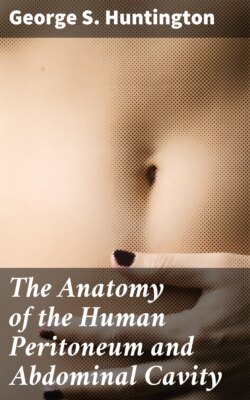Читать книгу The Anatomy of the Human Peritoneum and Abdominal Cavity - George S. Huntington - Страница 10
ОглавлениеFig. 86.—Stomach of Urinator imber, red-throated loon. (Columbia University Museum, No. 1808.)
Fig. 87.—Scheme of stomach of granivorous bird. (Nuhn.)
The three stomachs of the cetaceans are similar to those of the ruminants (Fig. 85). The first is a crop-like reservoir for the reception of the food when swallowed. The mucous membrane is entirely devoid of digestive glands. In the dolphins the mucous membrane is provided with a hard horny covering, which serves to break up the food mechanically by trituration. The second stomach and the gut-like pyloric prolongation constituting the third stomach contain gastric glands and are hence digestive in function.
(b) Stomach forms, in which a portion of the organ is converted into an apparatus for mastication, are seen especially in birds, in which animals, on account of the absence of teeth, mastication cannot be performed in the mouth.
The stomach of the bird is usually composed of two segments, one placed vertically above the other.
The first appears like an elongated dilatation of the œsophagus, forming the Proventriculus or glandular stomach.
The second is larger, round in shape, with very strong and thick muscular walls (Figs. 86 and 87).
The proventriculus furnishes the gastric juice exclusively.
The second or muscular stomach, devoid of gastric glands, functions merely as a masticating apparatus for the mechanical division of the food. The thick muscular walls of this compartment may measure several inches in diameter and carry on the opposed mucous surfaces lining the cavity a hard horny plate with corrugated and roughened surface (Fig. 88). These hard plates are designed to crush the food between them, as between two mill stones. The muscle stomach is best developed in herbivorous birds, while both the muscular wall and the horny plate are much weaker and thinner in carnivore wading and swimming birds (Fig. 89).
| Fig. 88.—Œsophagus and stomach of Gallus bankiva, hen. (Columbia University Museum, No. 1809.) | Fig. 89.—Stomach of Botaurus lentiginosus, bittern. (Columbia University Museum, No. 23/1810.) |
| Fig. 90.—Stomach of owl sp. (Nuhn.) | Fig. 91.—Stomach of Ardea cinerea, heron. (Nuhn.) |
Fig. 92.—Stomach of crocodile. (Nuhn.)
In birds of prey, especially in the owls, the stomach walls are scarcely more massive than in other animals, and the mucous membrane is soft and devoid of a horny covering. The glandular and masticatory stomachs are less sharply divided from each other in these forms, and the entire organ conforms more to the general vertebrate type (Fig. 90).
In some birds (herons, storks, etc.) a small rounded third stomach, the so-called pyloric stomach, is placed between the muscle stomach and the pylorus (Fig. 91). It contains no gastric glands, and possibly may function as an additional absorbing chamber.
Among reptiles the stomach of the crocodile resembles the organ in birds (Fig. 92). It is flat and rounded in shape, the muscle wall carries a tendinous plate, and there is a pyloric stomach. There is, however, no glandular stomach or proventriculus, as in birds, and the mucous membrane is not covered by a horny plate, but is soft and contains the peptic glands. Figs. 93 and 94 show the stomach of Alligator mississippiensis, in the ventral view and in section.
| Fig. 93.—Stomach of Alligator mississippiensis. (Columbia University Museum, No. 1811.) | Fig. 94.—Same in section. Thin-walled cardiac segment continues into cavity of pyloric ventriculus. |
Fig. 95.—Stomach of Bradypustridactylus, three-toed sloth. I. First stomach, devoid of gastric glands, corresponding to rumen of ruminants.
II. Second stomach, the homologue of the ruminant reticulum.
III. Digestive stomach proper, provided with gastric glands connected by a gutter with the œsophagus.
IV. Muscular stomach, the walls formed by a thick muscular plate and provided on the mucous surface with a dense corneous covering for purposes of trituration.
(c) The combination of the two accessory functions just described in the same stomach is found in the three-toed sloth (Fig. 95).
There are here two large reservoirs, which correspond to the rumen and retinaculum of the ruminants, and a digestive compartment containing gastric glands, which corresponds to the ruminant abomasum, and is connected by an œsophageal gutter directly with the œsophagus. At the pyloric extremity the muscle wall is greatly increased and the mucous membrane of this portion carries a thick horny covering, forming a masticatory stomach greatly resembling the corresponding structure in the bird. Its function is evidently to complete the mechanical division of the food which has only been partly masticated in the mouth.
The same significance is probably to be attached to the thickened muscular walls which the pyloric segment of the stomach in Tamandua bivittata, another edentate, presents (Fig. 96), in strong contrast with the thinner walled cardiac segment and fundus.
Fig. 96.—Stomach of Tamandua bivittata, collared ant-eater, (Columbia University Museum, No. 68/1485.)
